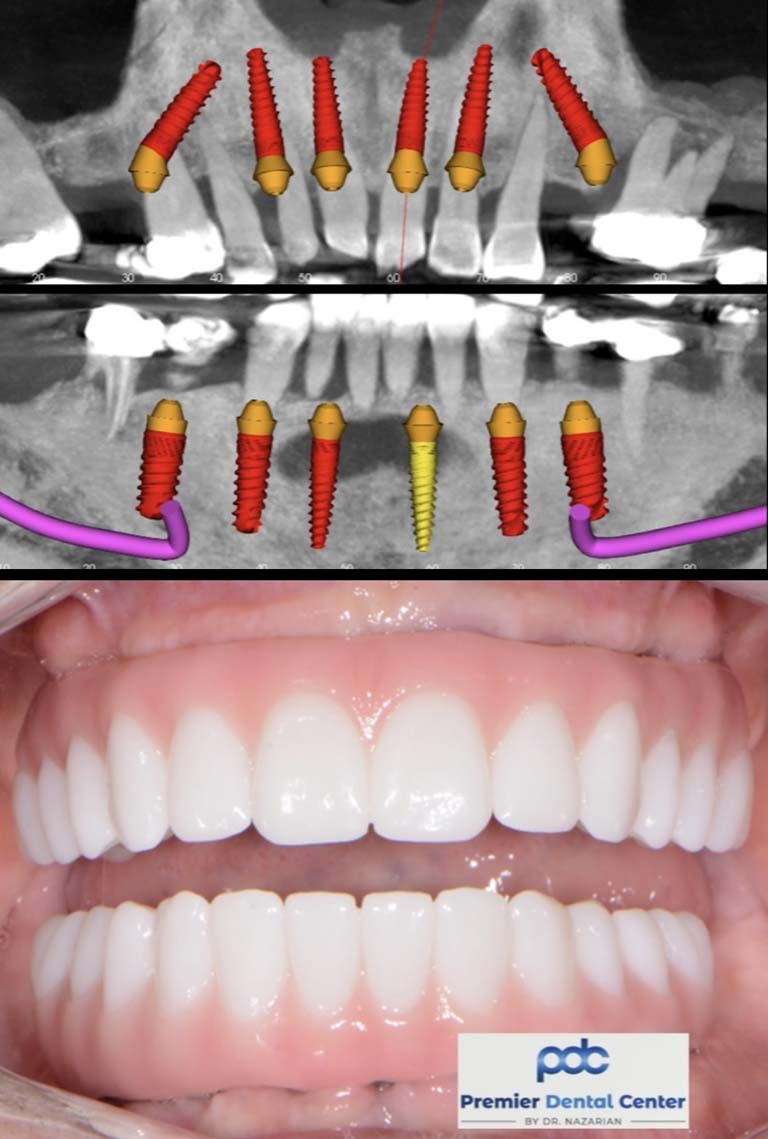The 9-Minute Rule for Dental Sense
The 9-Minute Rule for Dental Sense
Blog Article
The smart Trick of Dental Sense That Nobody is Discussing
Table of ContentsSome Known Details About Dental Sense Our Dental Sense PDFsHow Dental Sense can Save You Time, Stress, and Money.A Biased View of Dental Sense
are clinical devices surgically implanted into the jaw to recover a person's capability to chew or their appearance. They supply support for artificial (phony) teeth, such as crowns, bridges, or dentures. When a tooth is shed as a result of injury or illness, a person can experience difficulties such as fast bone loss, defective speech, or changes to chewing patterns that lead to pain.Dental implant systems contain a dental implant body and oral implant abutment and may additionally consist of a joint addiction screw. Front tooth filling. The dental implant body is surgically placed in the jawbone instead of the tooth's root. The dental implant abutment is usually affixed to the dental implant body by the abutment fixation screw and expands with gum tissues right into the mouth to sustain the attached artificial teeth
(https://slides.com/dentalsense1)Framework of The Oral Implant System selecting oral implants, speak to your dental company regarding the prospective benefits and risks, and whether you are a prospect for the treatment. Points to take into consideration: Your overall health and wellness is a vital consider determining whether you are a great prospect for dental implants, the length of time it will certainly take to heal, and the length of time the dental implant might remain in area.
Smoking may affect the recovery procedure and lower the long-term success of the implant. The recovery process for the dental implant body might take several months or longer, during which time you generally have a short-lived joint in area of the tooth. the oral implant procedure: Carefully adhere to the dental health instructions offered to you by your dental supplier.
The Best Strategy To Use For Dental Sense
Implant failure can cause the requirement for one more operation to repair or replace the dental implant system. Restores the capacity to chew Restores aesthetic appearance Helps maintain the jawbone from diminishing as a result of bone loss Maintains the health and wellness of the surrounding bone and gums Aids keep adjacent (neighboring) teeth steady Improves top quality of life Damage to bordering natural teeth throughout implant positioning Injury to the surrounding tissues throughout surgical treatment, such as sinus opening Injury throughout surgical treatment (for instance, crack of surrounding jawbone) Poor function, such as seeming like the teeth do not attack together generally A feeling that the tooth hangs or twisting in position resulting from an abutment screw loosening Implant body failing (looseness of the dental implant body) because of systemic infection, check my site which might be more most likely in people with unchecked diabetes mellitus because of local infection in bone and periodontals supporting the dental implant body as a result of delayed recovery, which might be more likely in patients who smoke Difficulty cleaning up the periodontals around the implant, causing poor oral hygiene Unattended periodontal condition Post-surgical feeling numb because of nerve impingement or damage Constantly inform wellness care suppliers and imaging service technicians that you have dental implants prior to any magnetic vibration imaging (MRI) or x-ray treatments.
FDA is not knowledgeable about any type of negative occasions reported for MRI or x-ray procedures with dental implants. Oral implants systems are commonly made from products that follow worldwide consensus standards of the International Company for Standardization (ISO) or ASTM International. These criteria have information of what makes a safe material.

An oral implant is a structure that changes a missing tooth. With screw-like gadgets, the specialist inserts a dental implant right into the jawbone, and it acts as a support for a man-made tooth, called a crown.
Dental Sense Can Be Fun For Everyone
Some people are not eligible for dental implant surgical treatment. It is for dental surgeons to run on individuals with: severe illnessuncontrollable metabolic diseasebone or soft cells disease or infectionIf these issues are resolved, an individual can have the surgical procedure. In, dental cosmetic surgeons refrain from operating individuals with: If people with any one of the above undertake dental implant surgical procedure, there is a greater risk of the implant stopping working.

Dental dental implant surgery is an individualized procedure. It's not the exact same for everyone. The complying with gives a general summary of what you can expect your dental expert, oral specialist, periodontist or prosthodontist to do: Position the implant operatively. Offer you time to recover. Affix the article and final crown, bridge or denture.
Next off, your surgeon will thoroughly position the dental implant right into your jaw. If your implant is near the front of your mouth, your dental professional will certainly make a short-lived tooth for you to put on until you heal.
Dental Sense Things To Know Before You Get This
During the recovery phase, your jawbone must fuse to the dental implant. This process can take anywhere from three to nine months.
Once your dental implant heals, your dental expert can affix the abutment (tiny port article) and your last repair (crown, bridge or denture). This normally takes regarding one hour to finish and may call for a second minor surgical procedure. You shouldn't feel any discomfort during your dental implant procedure since your service provider will make use of medicine to numb your gums.
Report this page